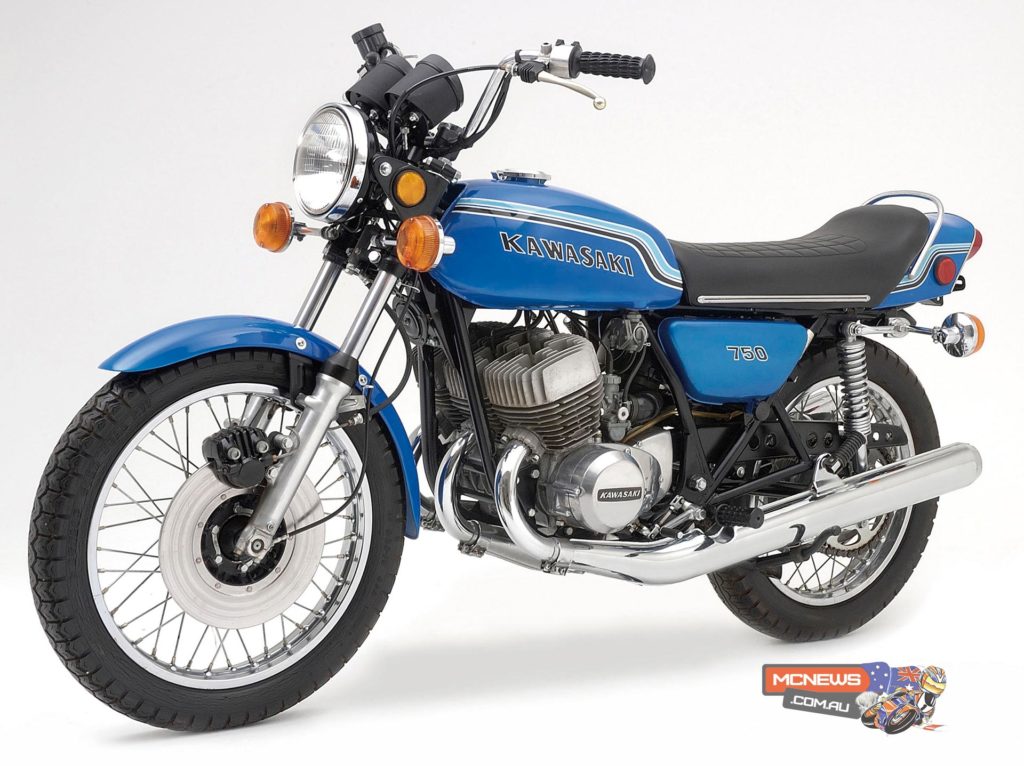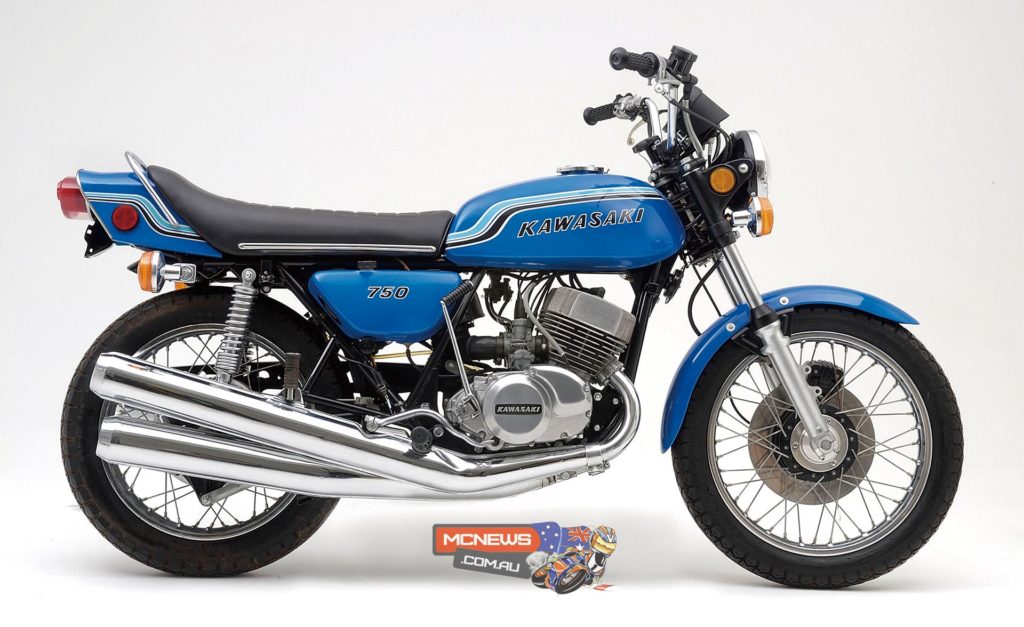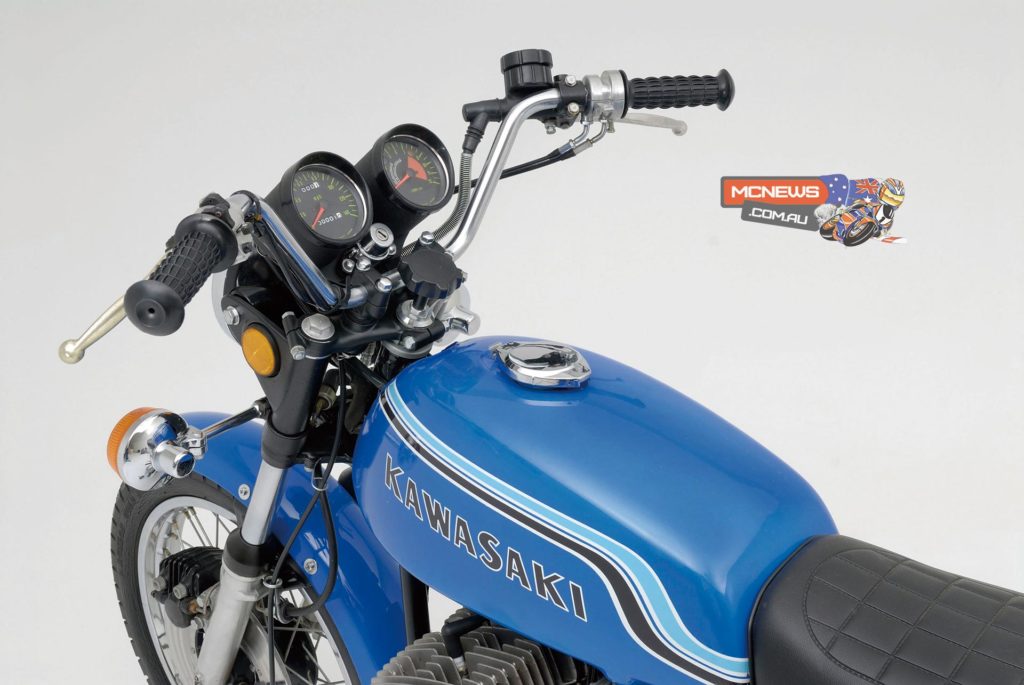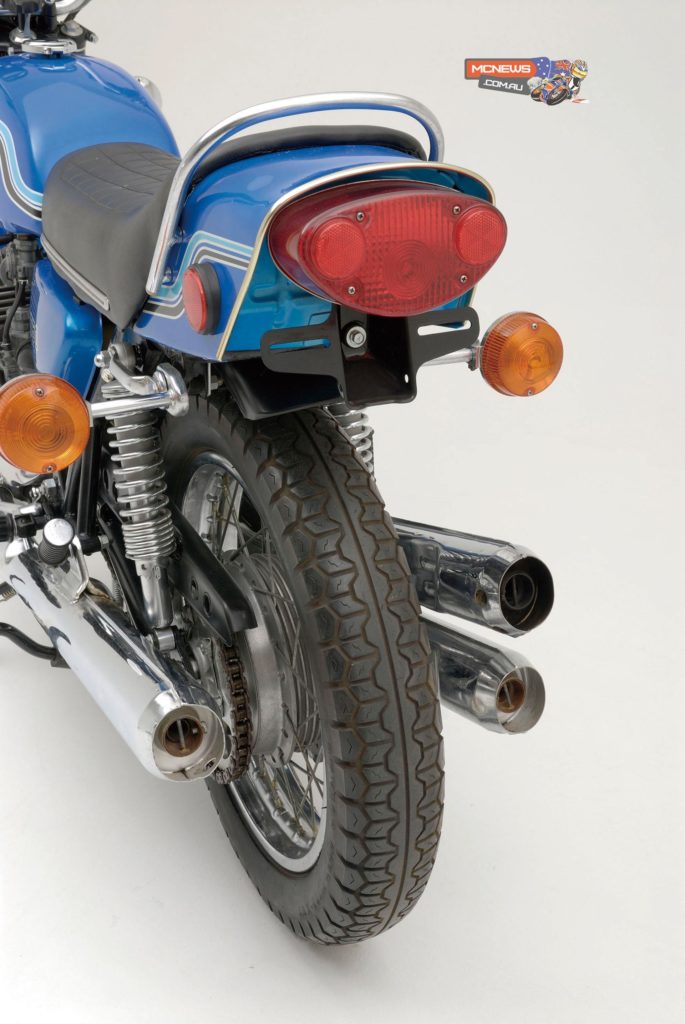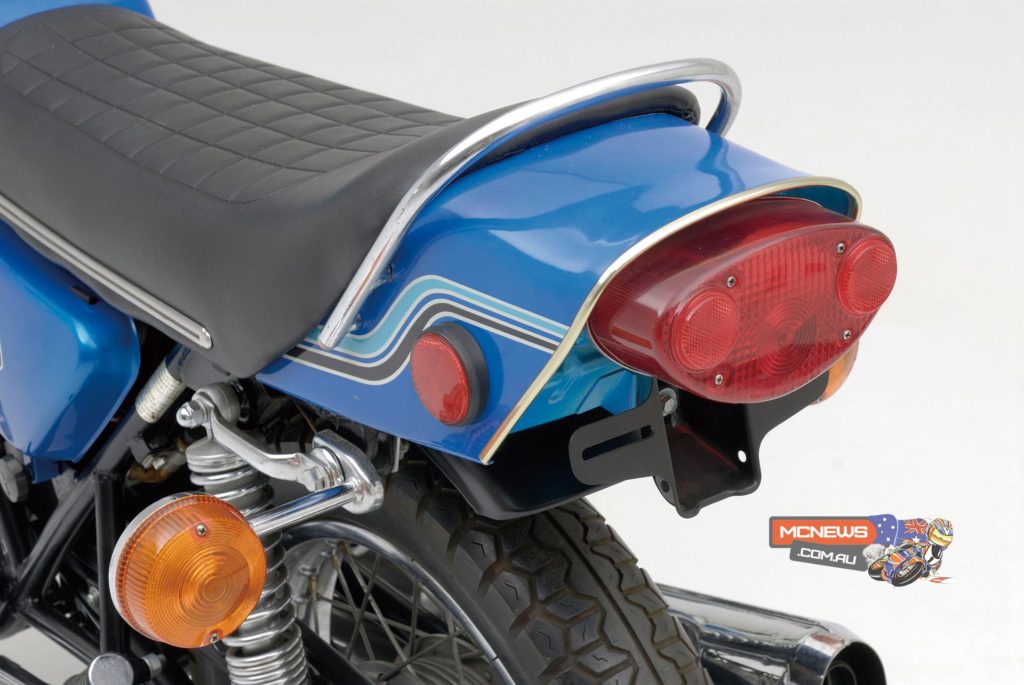Kawasaki H2 MK IV – By Trevor Hedge
With all the out of control hype surrounding the release of the new supercharged Kawasaki H2R, we thought it might be time to revisit the new flagship’s namesakes in the shape of this 1973 Kawasaki H2 Mach IV, shown at the recent Motorclassica event staged at Melbourne’s Royal Exhibition Building.
20,000 people visited the 500 cars and motorcycles on display over the three-day event and despite cars being the primary focus of the event which also includes Australia’s International Concours d’Elegance, there were plenty of motorcycles on hand for two-wheeled aficionados to salivate over, particularly those with a leaning towards European or American machinery but there were also some interesting Japanese motorcycles on display, the first of which we will feature is John Grauduszus’ 1973 Kawasaki H2 Mach IV.
Only nine of these machines were originally sold Down Under in this gaudy and so very seventies purple colour scheme. This particular example has only had the tank repainted due to fading over time, but otherwise the machine is largely unmolested.
The H2 was a two-stroke 120-degree firing 750cc triple-cylinder produced between 1972 and 1975 and came on the back of the success of the 500cc H1 Mach III from 1969.
Back in the day the claimed 74 horsepower was huge news and the large capacity gave it a much larger spread of power than previously seen two-stroke motorcycles. It was also enough to make the H2 the fastest accelerating motorcycle in production with quarter mile times of 12-seconds seemingly par for the course. Although these days there are lesser capacity scooters that could show the H2 a clean set of heels from the lights, let alone in the bends…
Many claim the original 1972 machines were the most powerful as changes were made in 1973 to try and squeeze more range from the 17-litre fuel tank and by 1974 the official power rating was recued to 71 horsepower and a longer swingarm and improved steering damper fitted to calm the somewhat wayward ways of the spindly chassis. Fuel economy was reported to be as bad as 14 litres per 100km in many cases. And while the handling of the machine would be completely alarming to anybody remotely acquainted with any modern motorcycle, it was widely reported as a huge step forward over its H1 predecessor.
Styling wise the H2 was one of the first motorcycles to effectively shroud the rear light assembly with a much shorter rear fender than generally seen before.
Along with the oiling jets spraying on to the engines vital reciproacting parts inside to assist lubrication, there was also a hand activated chain oiling system to keep the chain lubricated while on the go. Oil was something that was also the H2’s nemesis with any form of city riding often oiling up the plugs within minutes on the early models, a trait that was somewhat cured as the machine evolved throughout its production life.
The original sales brochure claimed the purpose of the H2 was, ‘To give you the most exciting and exhilarating performance and demands the razor sharp reactions of an experienced rider as it is a machine you must take seriously.” With the amount of these machines that ended up in the bushes and the amount of riders put into hospital, that advice was obviously not taken by too many!
Kwasaki H2 MK IV Specifications
- Engine: Air-cooled, two-stroke, transverse three-cylinder,
- Engine capacity: 748 cc
- Bore x Stroke: 71 x 63 mm
- Compression Ratio: 7.3:1
- Induction: 3x 30 mm Mikuni carbs
- Starting and ignition: Kick start battery and coil
- Max Power: 74 hp (55 kW) @ 6800 rpm
- Max Torque: 7.9 kg-m @ 6500 rpm
- Transmission: 5-speed, chain drive.
- Frame: Double tubular steel cradle
- Front: Suspension: Telescopic hydraulic forks
- Rear Suspension: Dual shocks, Swing arm
- Brakes: Single disc (front) Drum brake (rear)
- Dry-Weight 205 kg
- Fuel Capacity: 17 litres
Racing the H2 – A walk back in time with Robert Timco
After posting this piece on the H2, one of our readers and MCNews.com.au Facebook follower, Robert Timco kindly shared his experiences of racing a H2 back in the day when motorcycle chassis design, tyres and brakes had a lot to be desired! Take it away Robert.
The adventures of a 16-year-old with little money and less sense but a heart full of try. By 1974 I had gone real well on my Yamaha YS1 125cc gp twin, won a lot of races and got my pro license.
I lived in Vancouver, Canada and we had Mile High Racing at Westwood a fast cambered and off cambered track with a back straight just on a mile in length, elevation to Deers leap mid back straight was 822′ then and the 2nd half down hill to the hairpin. That 1 mile straight through the forest lifting the front wheel over Deer’s leap well all I wanted was to go faster.
Fall 1973 arrives and the reigning production champion 72 and 73 Frank DelPoppo is retiring and his fast and mint, with spares, Kawasaki H2 is for sale? Fell totally head over heals in love and worked my butt off to buy her > $1000 CDN 1973 dollars was a bit of money, the cost of a brand new one. This one was completely sorted and a race winner, Frank dominated on her so just before Christmas I got her. She lived in my kitchen, I lived in a basement suite in my parents house where dreams of stardom where started. I had a ton of spares, four motors, a spare frame, I had not even known the extent of the spares but it must have come to nearly two and a half complete bikes.
Rules were non existent in 1975 production bikes and parts so mine came with Bill Wirges expansion chambers, Koni rear shocks, pressed bronze rear swingarm bushings (important as this and mismatched tyres is where the wobble thing started and ended). Blue printed and decked to fit the 32 Mikuni’s she wore Dunlop TT100’s tyre of the times. I added TZ 750 clip ons, a second front drilled disc, complete port and polishing with knife edged transfers, and matched the intake and exhaust ports while removing a large portion of the rear piston skirt.
April 1975 1st race of the season and Saturday we get snow? Fate? Perhaps Gods way of saying, “think about what your doing mate” ! I’m 17 years old 5 ‘ 9″s maybe 148 pounds, you know “young dumb and full of cum ” . Better to start in the wet and cold, I mean fast to me was 110 mph maybe ?
The day ended up a lot of fun, and some lessons learned were felt, not so much added to grey matter, more like being branded . She pulled like a dragster, when you turned the throttle you had to pull forward on the clip ons because the seat was flat, cut out some foam. The right side bottom pipe dragged as the Koni shocks were shorter, beating in the pipe. Tight turn 2 leaned over almost lost the back in practice, center stand was off but bracket and side stand dragged on pavement, they were cut off in the pits, Yamaha’s Bob Work , Steve Baker’s mechanic, removed them with a gas torch, sorted.
Race was fantastic, gearing was a bit short but motor would pull so hard it never mattered . The worst bit of racing an H2 or an H2R was the vibration, so the snow had brought with it ski gloves, which became the must have item, turn the throttle for five minutes and your hands would get numb and tingle, feet as well so construction boots were the order of the day, leave the Italian road race boots for the 125.
The back straight at Westwood was like a religious experience, much more so on that bike. Clean run through 3b was set off by turn 3a an off camber down hill right that demanded a tight line ,and let the bike roll out of 3a carefully turning the throttle as the straight opened uphill in front of you, nail the throttle too early she would understeer and keep going out towards the runoff which was forest, not a plan to work with. The feeling of turning that throttle wide open going through the 5 spds was quite unbelievable and to this day I can still feel it, the pull and the vibration and holding on for dear life. I often thought it should have been called Deers Leap for that reason, not for the fact that deer would often cross at that very spot. Resulting in more than one destroyed bike or car, and BBQ’s of course…
One real surprise of racing that H2 was you could never take a break on her, if you put the bottom of your Bell Star on the tank the vibration would loosen your fillings, blur your vision and make you eyes stream tears. Smile, hold on tight turn the throttles wide open, and pretend you were having fun.
Winning races on that bike was hard work. Rickman Honda’s and Kawasaki’s had grown out to 1023cc and the writting was on the wall and by the next season 1976 AMA Superbikes were the series to run. Skinny tyres and 400 + pound bikes with close to a 100 hp? Hell yeah, it was a lot of fun.
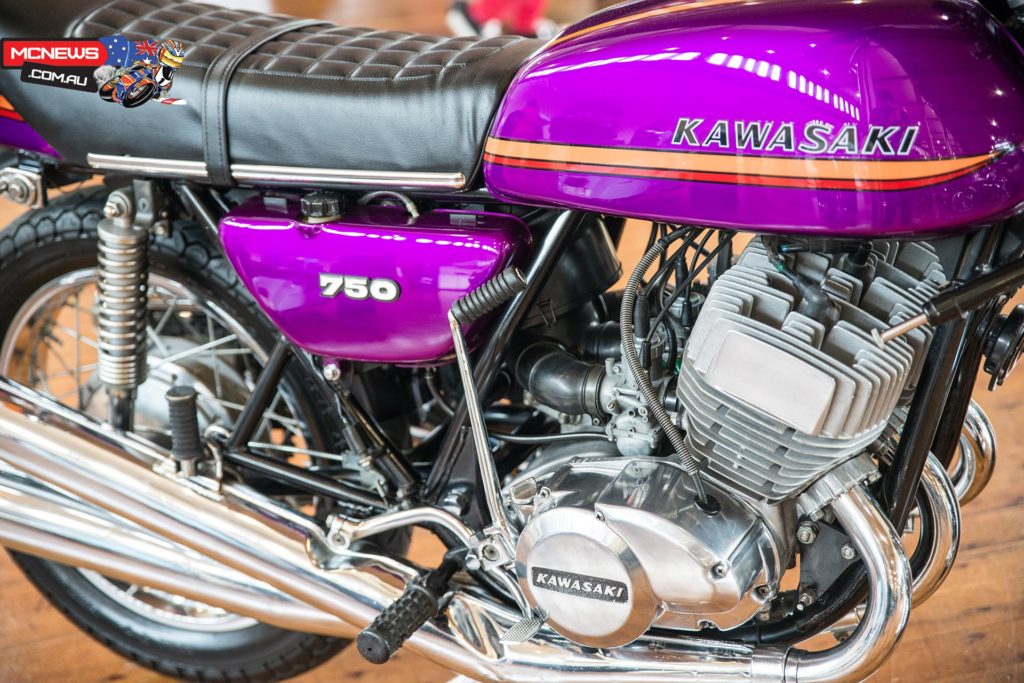
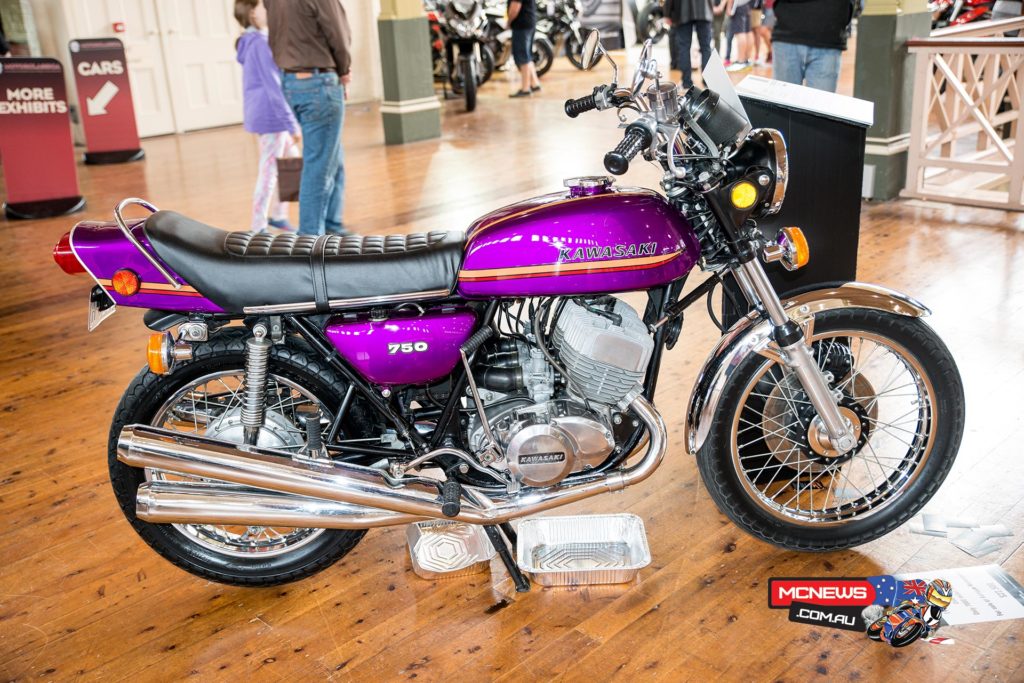
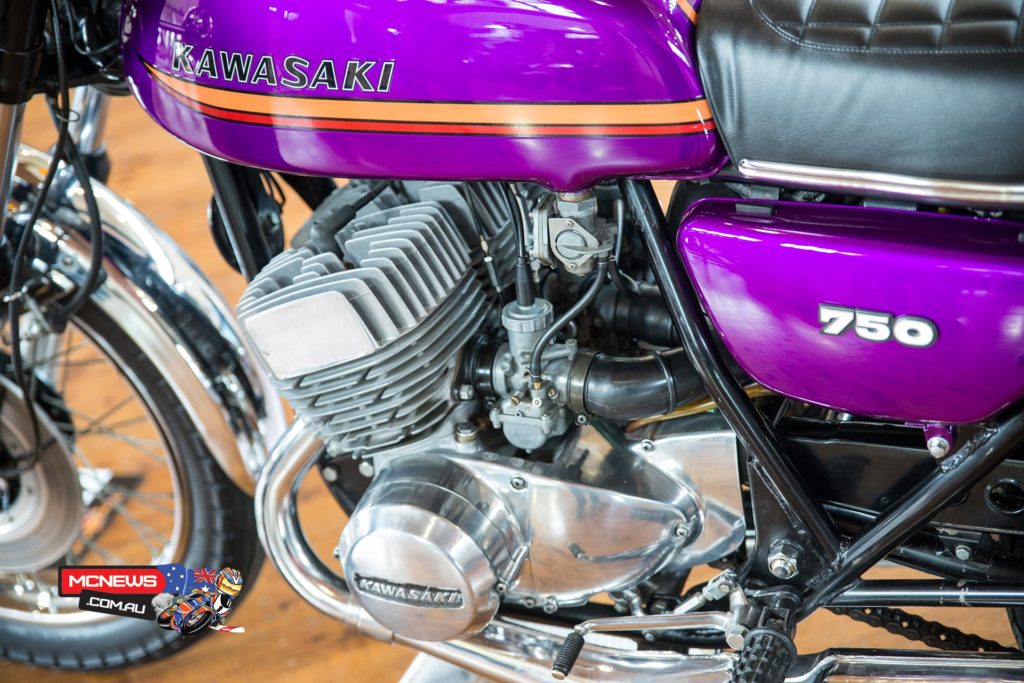


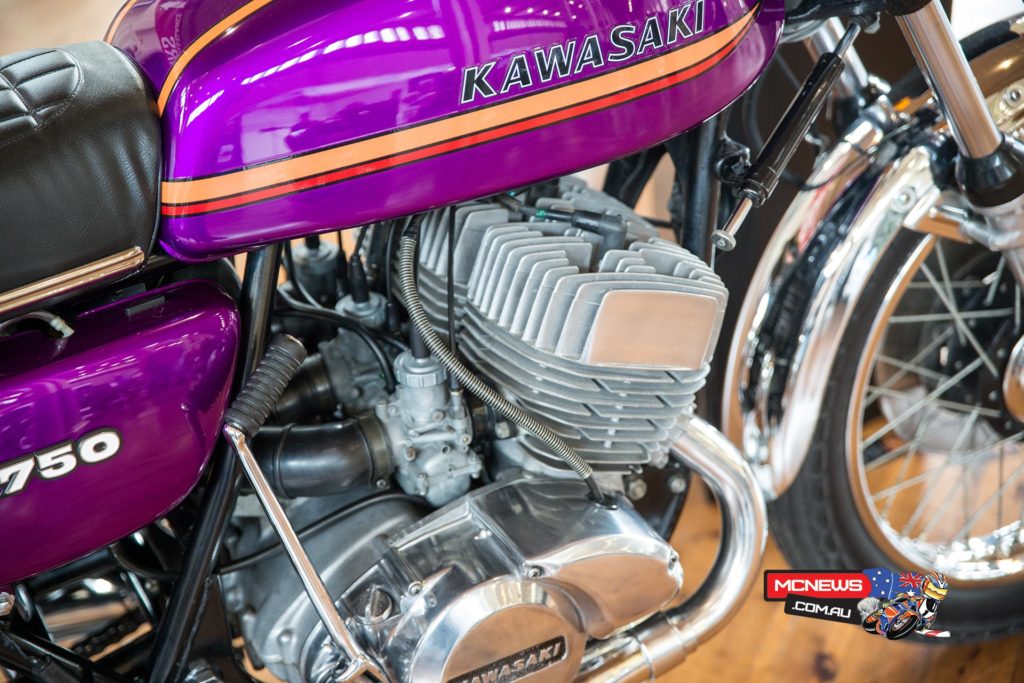
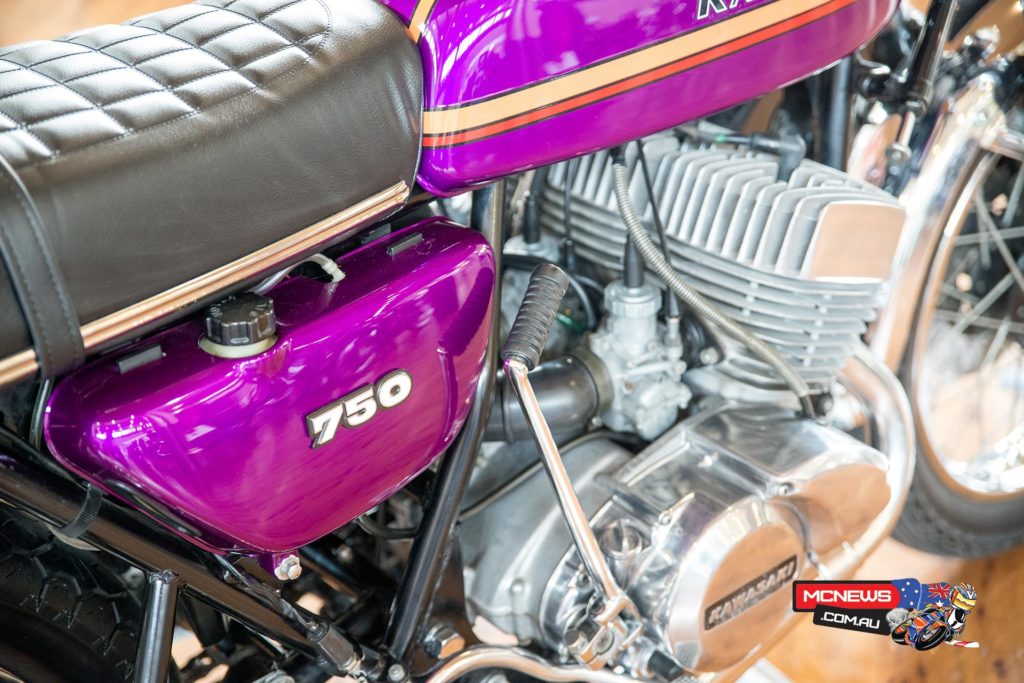
Sources
Further Reading
Here are some official file photos of the original 1971 Kawasaki H2

